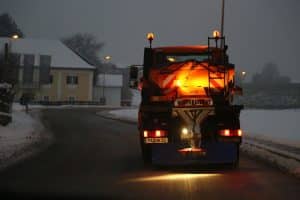Urban Wildlife Management: Peaceful Coexistence Strategies
Urban wildlife management is a growing concern in many cities around the world as rapid urbanization continues to encroach on natural habitats and bring humans into close proximity with wild animals. While urban wildlife can bring a sense of connection to nature and add diversity to city life, it can also pose challenges and potential risks. As such, it is crucial to implement peaceful coexistence strategies that promote the harmony between humans and urban wildlife. In this article, we will explore the importance of urban wildlife management and discuss effective strategies for peacefully coexisting with our wild neighbors.
The Importance of Urban Wildlife Management
With the increasing urbanization and loss of natural habitats, many species of animals are forced to adapt and thrive in urban environments. This can lead to conflicts and potential dangers for both humans and wildlife. Urban wildlife management plays a vital role in ensuring the safety and well-being of both parties. It also helps to maintain the balance of urban ecosystems and prevent the negative impact of human-wildlife conflicts.
Peaceful Coexistence Strategies
1. Understanding the Urban Wildlife
The first step towards peaceful coexistence with urban wildlife is understanding them. It’s essential to recognize that these animals are not intruders but native inhabitants of the area. They have been forced to adapt to the changing environment and survive in a human-dominated landscape. By learning about their behavior, habits, and needs, we can better coexist with them.
2. Habitat Management
Proper management of habitats can significantly reduce human-wildlife conflicts in urban areas. This involves preserving and creating natural habitats, such as green spaces and parks, to provide essential resources for wildlife. It also includes implementing measures to deter animals from venturing into human residential areas, such as using fencing and placing deterrents in sensitive areas.
3. Education and Awareness
In many cases, human-wildlife conflicts occur due to a lack of knowledge or understanding on the part of humans. By educating the public about the importance of urban wildlife and the need for peaceful coexistence, we can promote a more tolerant and compassionate attitude towards these animals. Education and awareness can also help reduce the number of wildlife injuries and fatalities caused by human behavior.
4. Responsible Trash Disposal
Garbage and food waste are major attractants for urban wildlife, resulting in conflicts and property damage. To reduce these incidents, proper trash disposal is crucial. Make sure to securely store trash in animal-proof containers and dispose of it regularly. This will not only prevent wildlife from scavenging for food in residential areas but also help keep the city clean and hygienic.
5. Coexistence with Caution
While it’s important to coexist with urban wildlife, it’s also essential to exercise caution and respect for these animals. Approaching or attempting to interact with them can be dangerous for both parties. It’s crucial to give wild animals their space and never attempt to feed or handle them. If you come across an injured or sick animal, contact your local wildlife rescue or rehabilitation center for assistance.
6. Seek Professional Help
In some cases, human-wildlife conflicts may require the assistance of professionals such as wildlife biologists and conservationists. These experts can provide valuable advice on how to manage or resolve conflicts, as well as undertake conservation measures to protect urban wildlife and their habitats.
In Conclusion
Urban wildlife management and peaceful coexistence strategies are crucial for maintaining the balance between humans and wild animals in urban environments. By understanding and respecting the needs of urban wildlife and taking responsible actions, we can promote a safe and harmonious coexistence with our wild neighbors. Remember, these animals were here first, and it’s our responsibility to find ways to peacefully coexist with them. Building a compassionate and tolerant relationship with urban wildlife is not only beneficial for them, but for us and our planet as well.






